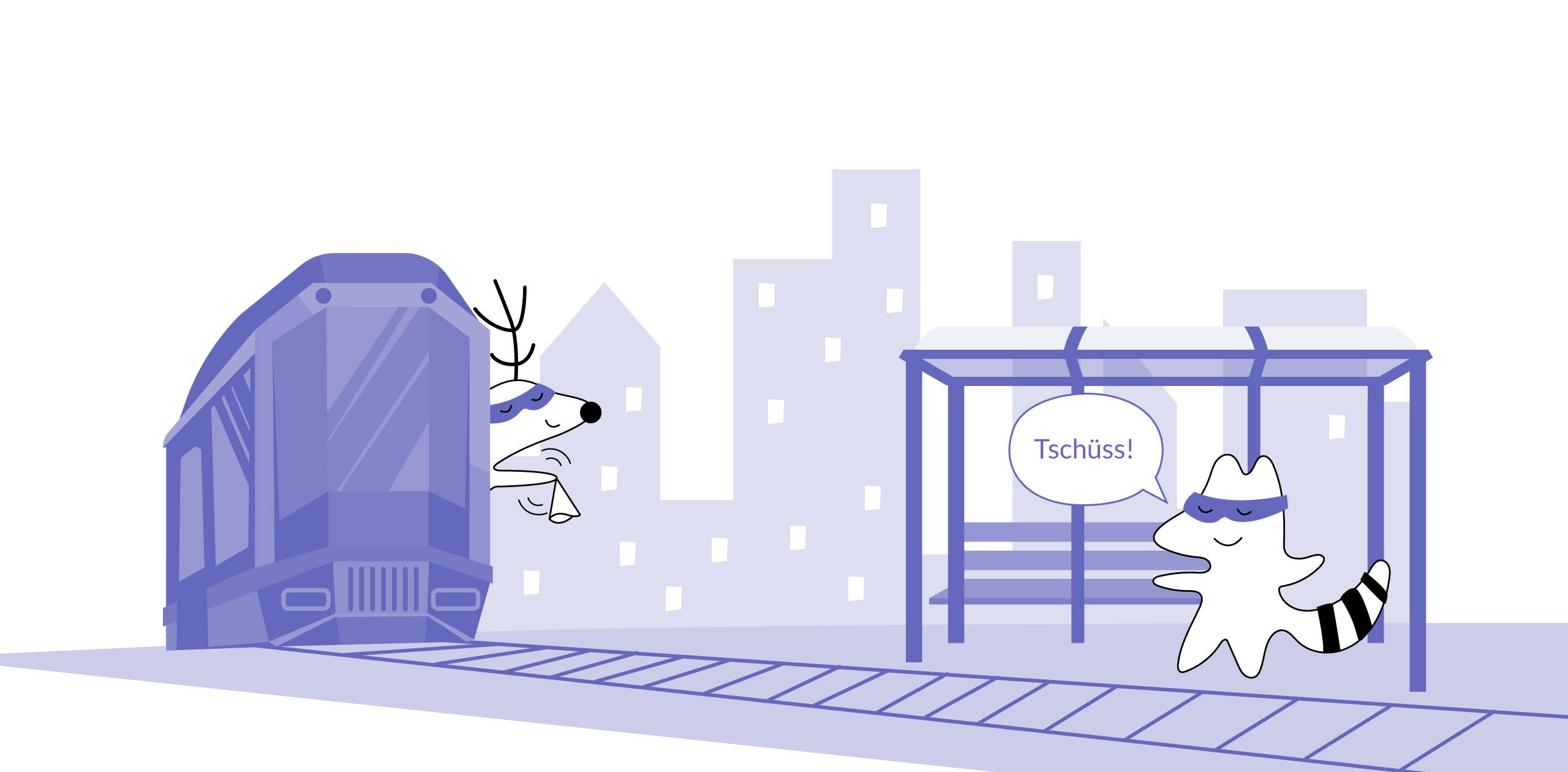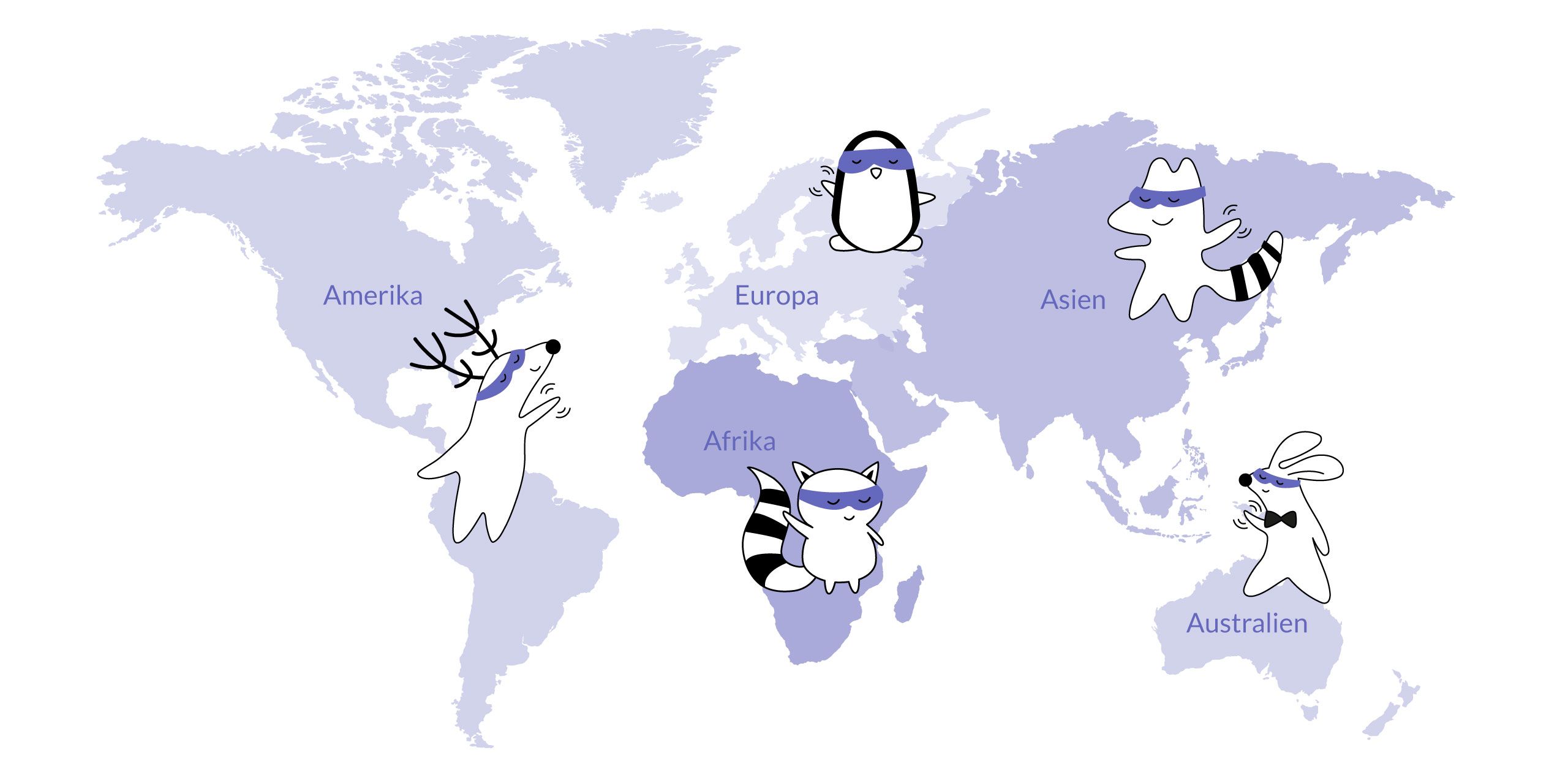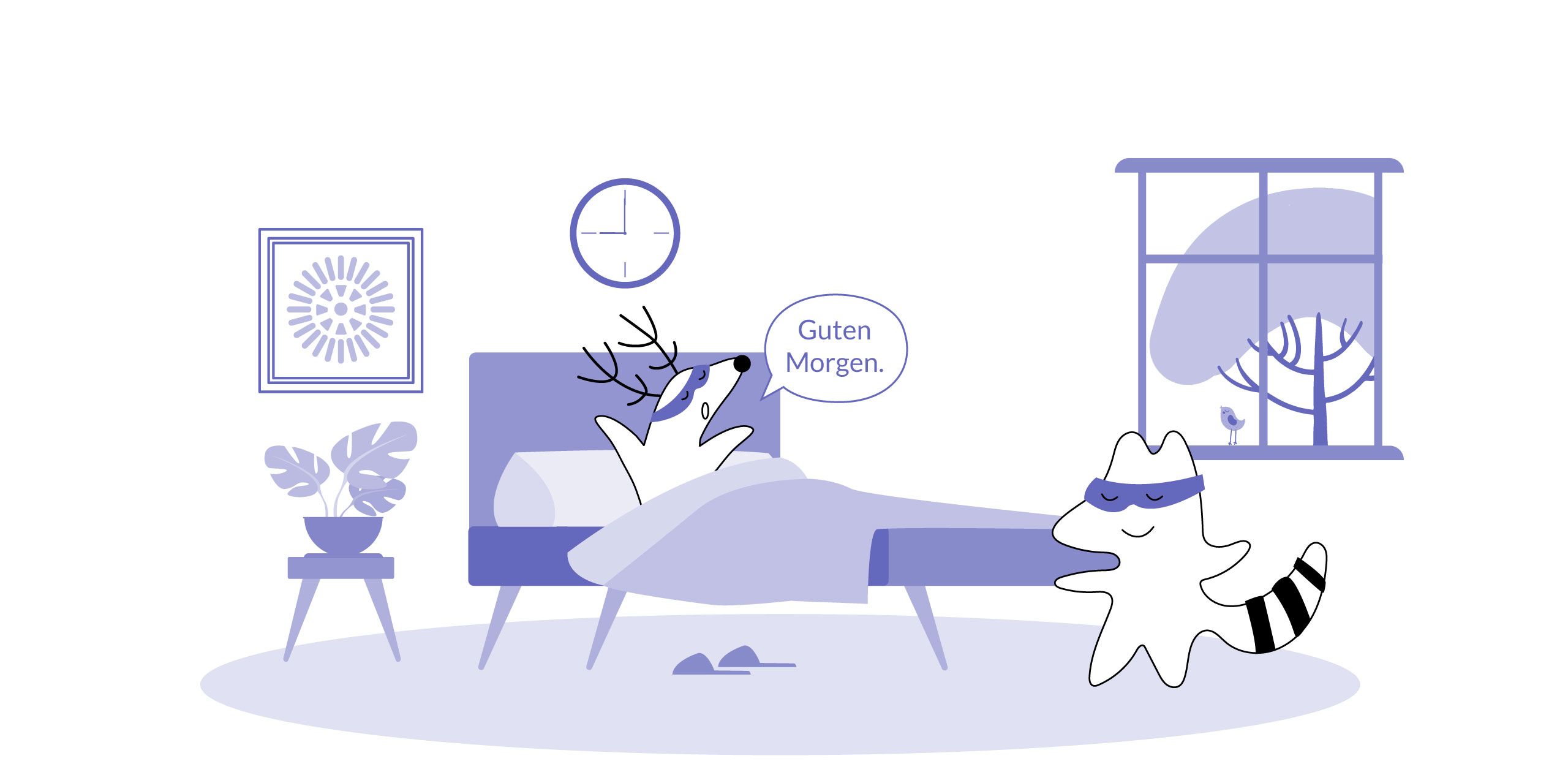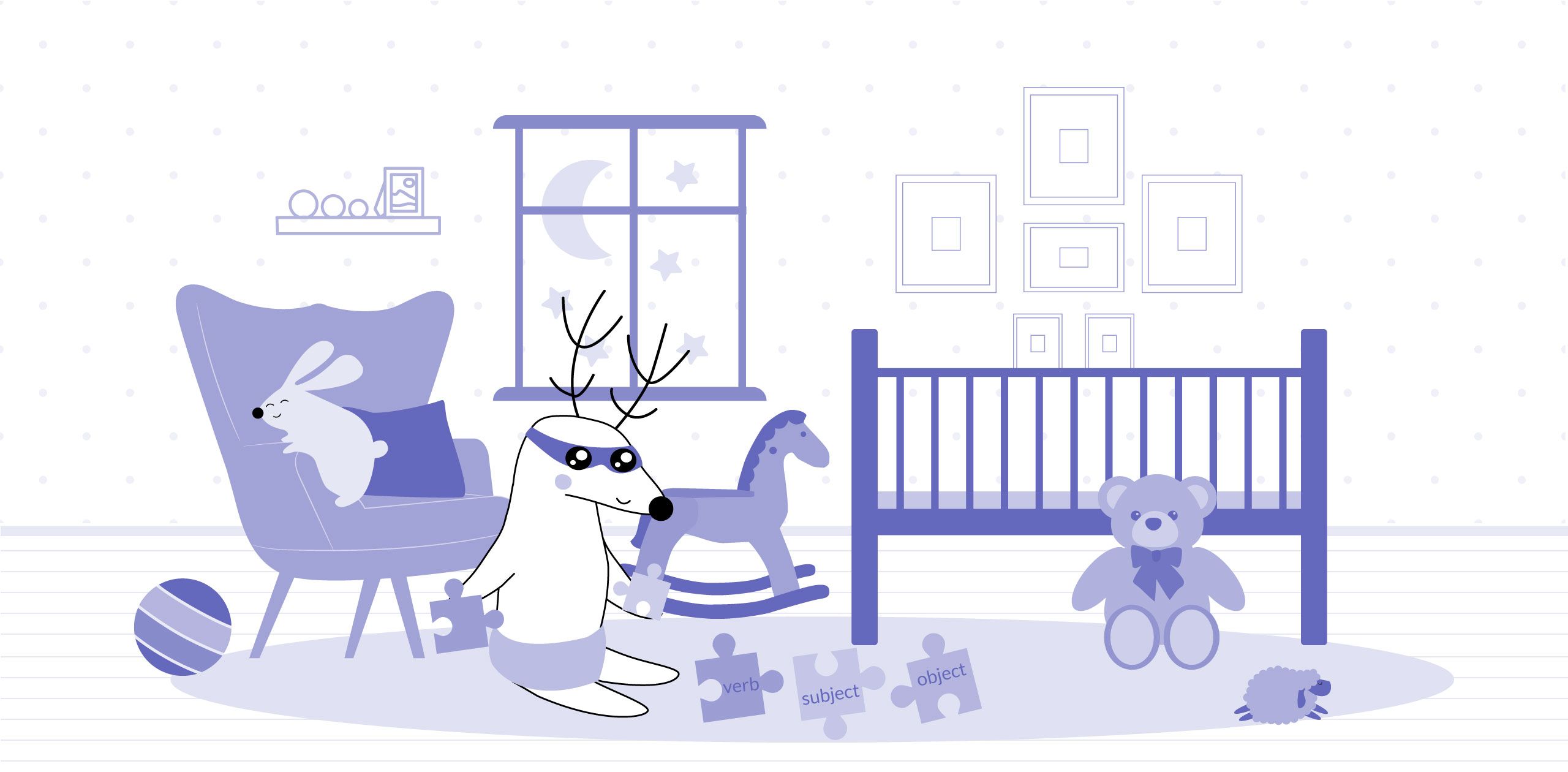
When learning German, you will need to understand how German sentence structure works. To minimize misunderstandings and sound like a native German speaker, you need to keep the German word order consistent.
In English, changing the word order can completely change the meaning of a sentence. Look at the following example: The man gives food to the dog vs. The food gives dog to the man. You see that after switching the nouns, the sentence does not make sense anymore.
You have more freedom in modifying the sequence of the words in German. As we discussed in our previous post about the German case system, German nouns vary their form to reflect their relationship to one another, which means they do not rely as heavily on word order to make sense.
Nevertheless, there are rules for the German sentence structure which you have to follow. In this post, we will cover the structure of basic German sentences and give you an idea of what you have to expect as you advance your German language skills.
Learn German with Langster
The German Sentence Structure in Basic Sentences
For English speakers, the basic German sentence structure is easy as the word order is similar to English. A sentence is usually built with the subject, verb, and other things like an object or a phrase, adverbs, etc.
The basic German sentence needs at least a subject and a verb. Those components are the minimum to build a sentence in German - objects and other sentence parts are optional. Look at the following sentence to see how similar the German sentence structure is to the English:
German
English
Die Katze isst.
The cat eats.
You have the noun "die Katze" (the cat) as the subject of the phrase and the verb "isst" (eats). We count the article "die" (the) as part of the noun. The sentence is complete like that, but we can add more detail, for example:
German
English
Die Katze isst Fisch.
The cat eats fish.
You see that the sentence structure is exactly the same in English as in German, SVO: subject - verb - object. In German grammar, that sentence structure is known to be Subjekt - Verb - Objekt. In this instance, if you flipped the nouns around, the sentence would no longer make sense.
What About Longer German Sentences?
As we said earlier, there are lots of options to add after the essential subject-verb structure. We already mentioned the first option with adding a direct object like in "Die Katze isst Fisch." To the basic German sentence structure subject - verb - object, you can also add more objects.
German
English
Die Katze isst das Essen des Hundes.
The cat eats the food of the dog.
Die Katze klaut dem Hund das Essen.
The cat steals the food of the dog.
Die Katze klaut dem Hund des Nachbarn das Essen.
The cat steals the food of the neighbor's dog.
In all examples, the sentence has first a subject followed by a verb and then objects. In German, those objects stand in different cases, which you can recognize by the object’s and respective article’s form. That is why you can easily change the word order in the sentence.

Let’s Play with German Word Order a Little
We will take the examples from above to show you how you can play with German sentences. The first sentence, "Die Katze isst das Essen des Hundes" (The cat eats the food of the dog), can alternatively appear in the following word order:
German
English
Des Hundes Essen isst die Katze.
The dog's food eats the cat.
Das Essen des Hundes isst die Katze.
The food of the dog eats the cat.
Die Katze isst des Hundes Essen.
The cat eats the dog's food.
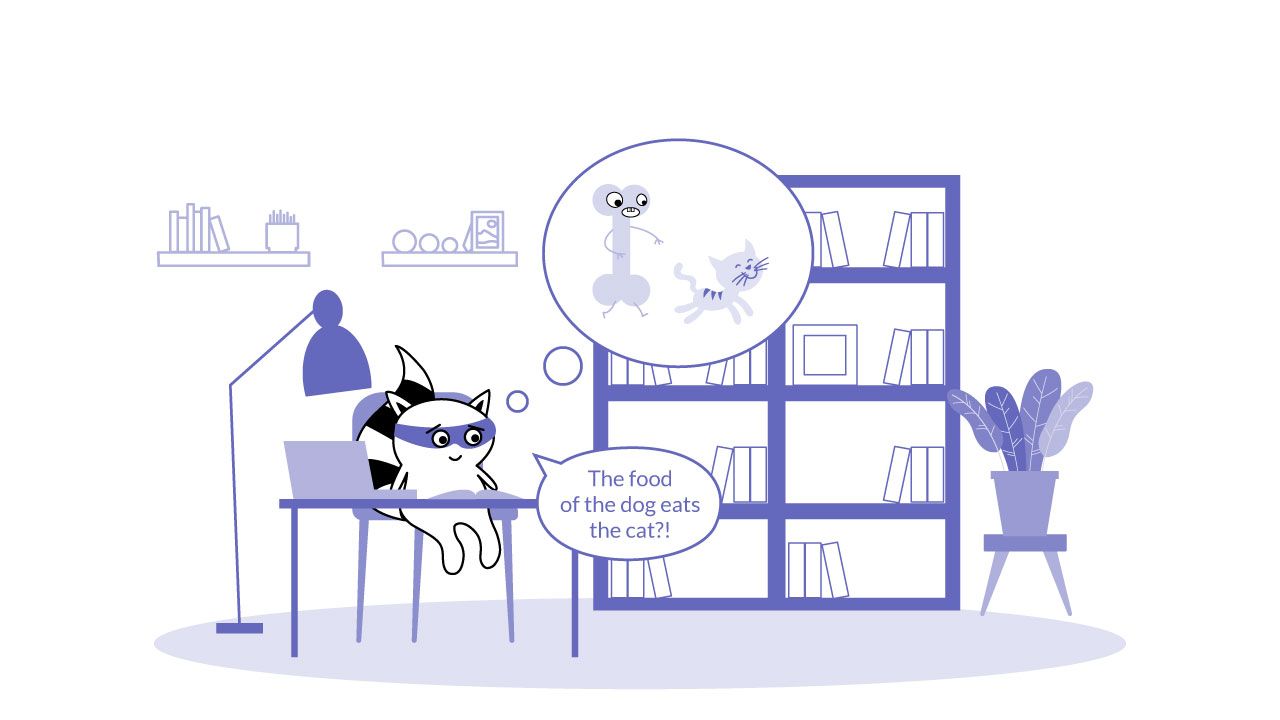
We tried to put the English translation in the same word order as the German sentence. As you can see, only the last option makes sense in English, while in German, you can use all of them.
In our previous post about the German case system, you can see how the noun's role in a sentence is marked by changing its form through the nominative case, accusative case, dative case, and genitive case. As a result, the word order is not essential in defining the nouns' relationships.
The German Sentence Structure in a Question
When you learn your first sentences in German, you will notice that the basic sentence structure subject - verb - object does not apply for all types of sentences. To ask a question in German, you have to change the sentence structure.
It is a very common mistake among German learners to forget to put the verb first, even though in English, the sentence structure of a question changes too. Consider the following sentence: "Do you play guitar?"
The order subject - verb - object stays the same with the main verb "play," but you have to put the auxiliary verb "do" at the beginning of the sentence. Instead of adding an auxiliary verb in German, you just have to change the word order from SVO to VSO (verb - subject-object). Look at the example:
German
English
Spielst du Gitarre?
Do you play guitar?
To compare, if the sentence was a statement instead of a question, the German word order would be "Du spielst Gitarre" (you play guitar). You use this VSO-structure primarily in yes-or-no-questions. The sentence structure is a bit different with question words like who, what, or when.
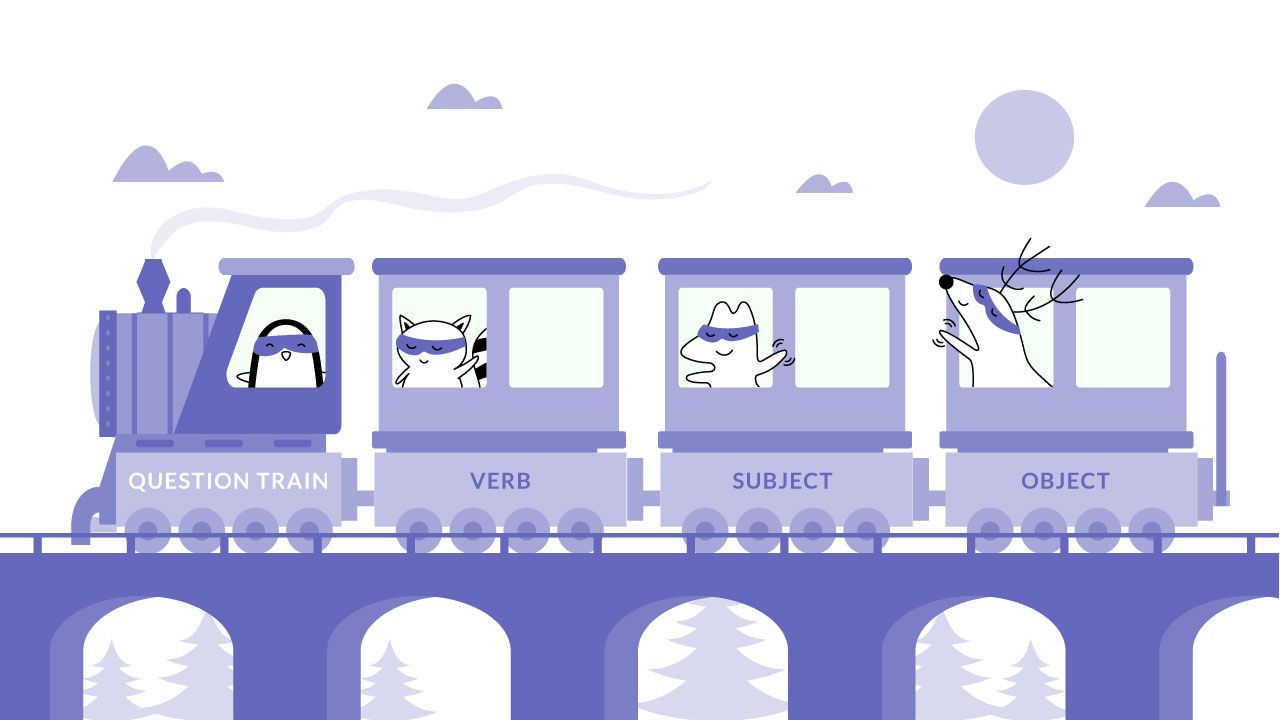
Sentences with German Question Words
Most of the sentences you learn first when starting to study German are answers to questions with German question words like "wann" (when), "wer" (who), "wo" (where), or "woher" (from where). Have a look at some basic German sentences:
German
English
Woher kommst du?
Where are you from?
Wie heißt du?
What is your name?
You can see that the question has the same structure verb - subject, but you add a question word before. As a result, the sentence structure is the same as in English questions. The verb comes before the subject.
German Word Order in Questions with Other Tenses
If you want to ask a question in German using one of the past tenses, the sentence structure is again similar to the English. The verb still comes before the subject. Let's have a look at a phrase in the present perfect:
German
English
Hast du Mama gesehen?
Have you seen mom?
You see that in the example, the question starts with the conjugated verb "hast" (have) followed by the subject "du" (you). The verb "gesehen" (seen) that is important for the context of the sentence comes last, and in German, it has to be at the end of the sentence.
Because of the past tense, there are two verbs in the sentences - the auxiliary verb "haben" (have) and the actual verb in its participle "gesehen" (seen).
Don't get confused by the verbs - for the German syntax structure of a question, it is essential to focus on putting the conjugated verb first and the subject in the second position. In terms of past tense phrases, the conjugated verbs are auxiliary verbs.
Reverse Sentence Structure in Long German
As you learn more vocabulary, the sentences get longer. With longer sentences, the structure is more complicated. To put lots of information in one sentence, it makes sense to use subordinating conjunctions like "obwohl" (even though) or "nachdem" (after).
The conjunctions help you combine two sentences with different information like, for example, two actions or one action that followed as a consequence of the first one. Let’s have a look at the following example sentence:
German
English
Obwohl das Wetter schlecht ist, gehen wir raus.
Even though the weather is bad, we go outside.
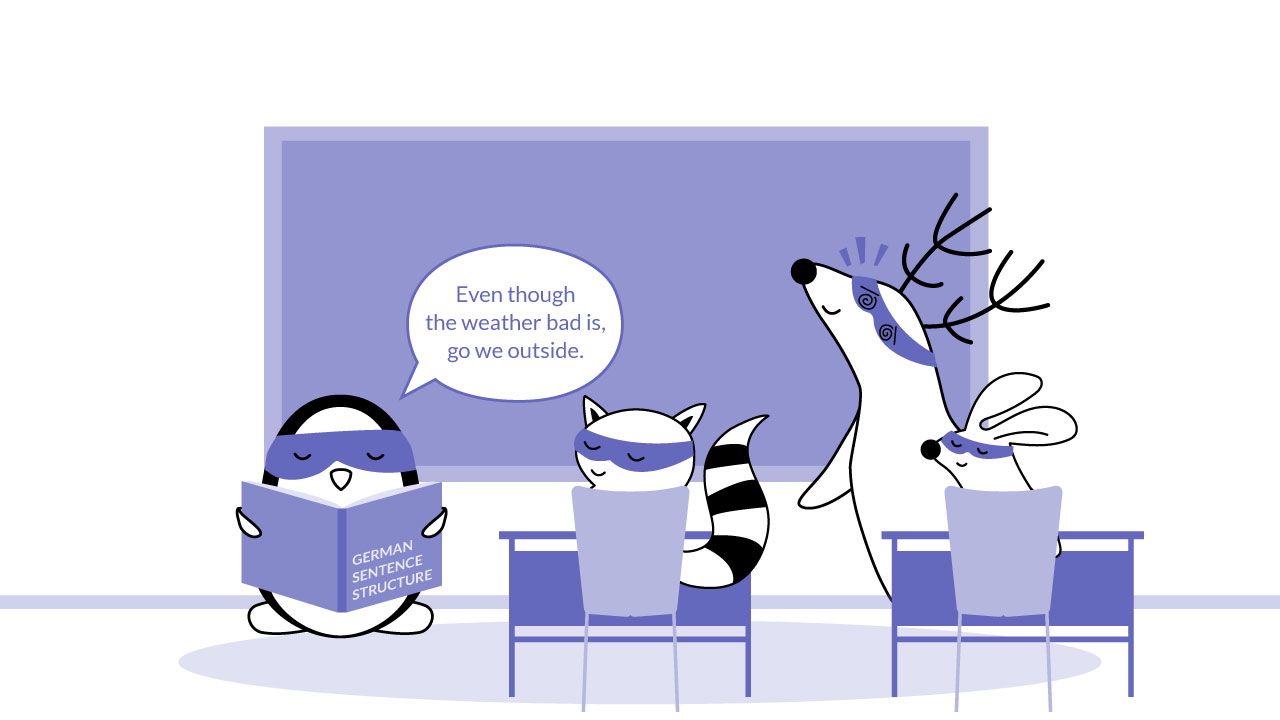
In the example, you see the subject is underlined and the verb is marked in bold. You might notice that the English and the German sentences have different sentence structures here.
While the English sentence has the same structure in the first and the second half (SVO), the German sentence changes its structure in the second half. Because of the subordinating conjunction, the structure in the second phrase is VS(O), so the verb is the first element.
Special Case: Relative Clauses
One option to build longer phrases in German is by forming relative clauses. A relative clause refers to the subject and describes it in more detail. Here you have an example:
German
English
Der Mann hat ein Kind, das Klavier spielt.
The man has a child who plays the piano.
Here you see that there are two pieces of information (phrases) with two verbs but just one subject. The first part follows the normal SVO-structure, while in the second part of the sentence the subject is missing, and the structure changes to (S)OV in German.
As a result, you have to memorize that in relative clauses the second verb has to stand at the end of the sentence.
Final Thoughts
Hopefully, we could clear up some sentence structure questions in this post and will try soon to build your own sentences in German. There are a few things more to learn about forming sentences in German but to start, this should be enough.
The German syntax is something you have to get used to, and reading in German can help you a lot with that. The Langster app provides you with short stories and news, which is very helpful in terms of syntax learning. Check it out if you haven't already, and learn how to build sentences like German speakers.






